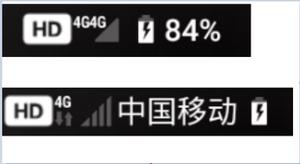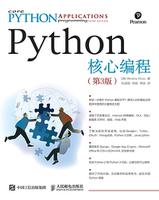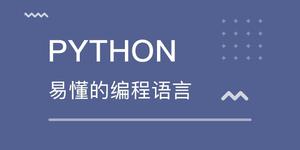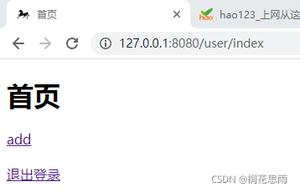Python正课131 —— Vue 进阶4

https://www.cnblogs.com/xuexianqi/p/13174317.html
有时候开发vue项目时,页面也可以算是一个大组件,同时页面也可以分成多个子组件.
因为,产生了父组件调用子组件的情况.
例如,我们可以声明一个组件,作为父组件
在components/创建一个保存子组件的目录HomeSon
在HomeSon目录下,可以创建当前页面的子组件,例如,是Menu.vue
// 组件中代码必须写在同一个标签中<template>
<div >
<span>{{msg}}</span>
<div>hello</div>
</div>
</template>
<script>
export default {
name:"Menu",
data: function(){
return {
msg:"这是Menu组件里面的菜单",
}
}
}
</script>
二:传递数据
父组件的数据传递给子组件
例如,我们希望把父组件的数据传递给子组件.
可以通过props属性来进行数据传递.
传递数据三个步骤:
1.在父组件中,调用子组件的组名处,使用属性值的方式往下传递数据
<Menu :mynum="num" title="home里面写的数据"/># 上面表示在父组件调用Menu子组件的时候传递了2个数据:
如果要传递变量[变量可以各种类型的数据],属性名左边必须加上冒号:,同时,属性名是自定义的,会在子组件中使用。
如果要传递普通字符串数据,则不需要加上冒号:
2.在子组件中接受上面父组件传递的数据,需要在vm组件对象中,使用props属性类接受。
<script> export default {
name:"Menu",
props:["mynum","title"],
data: function(){
return {
msg:"这是Menu组件里面的菜单",
}
}
}
</script>
// 上面 props属性中表示接受了两个数据。
3.在子组件中的template中使用父组件传递过来的数据.
<template> <div >
<span>{{msg}},{{title}}</span>
<div>hello,{{mynum}}</div>
</div>
</template>
步骤流程:
使用父组件传递数据给子组件时, 注意一下几点:
1.传递数据是变量,则需要在属性左边添加冒号.
传递数据是变量,这种数据称之为"动态数据传递"
传递数据不是变量,这种数据称之为"静态数据传递"
2.父组件中修改了数据,在子组件中会被同步修改,但是,子组件中的数据修改了,是不是影响到父组件中的数据.
这种情况,在开发时,也被称为"单向数据流"
子组件传递数据给父组件
1.在子组件中,通过this.$emit()来调用父组件中定义的事件.
<template> <div>
<p>Post的子组件</p>
<h2>{{fnum}}</h2>
<p>data={{data}}</p>
<p>fnum={{fnum}}</p>
<div><input type="text" v-model="fnum"></div>
</div>
</template>
<script>
export default {
name: "PostSon",
// 父组件传递数据给子组件: 1. 在父组件中调用子组件的组件名称标签上面声明属性和传递值,2. 在子组件中通过props进行接收
props:["data","fnum"], // 接受父组件中传递过来的数据
// 子组件传递数据给父组件[事件的方式进行传递]:
watch:{
fnum(){
console.log(this.fnum);
// this.$emit("父元素的自定义事件","要传递的数据"); // 通过this.$emit()方法,子组件可以把数据传递给父组件
this.$emit("postparentdata",this.fnum);
}
}
}
</script>
<style scoped>
</style>
对应的事件属性。
<template> <div>
<h1>num={{num}}</h1>
<Son data="我是付组件里面的内容" :fnum="num" @postparentdata="getsondata"></Son>
</div>
</template>
3.父组件中,声明一个自定义方法,在事件被调用时,执行的。
<script> import Son from "./PostSon"
export default {
name: "Post",
data(){
return {
num: 100,
}
},
components:{
Son:Son,
},
methods:{
getsondata(message){
console.log("父组件"+message);
this.num = message;
}
}
}
</script>
三:在组件中使用axios获取数据
默认情况下,我们的项目中并没有对axios包的支持,所以我们需要下载安装。
1.在项目根目录中使用 npm安装包
npm install axios接着在main.js文件中,导入axios并把axios对象 挂载到vue属性中多为一个子对象,这样我们才能在组件中使用。
// The Vue build version to load with the `import` command// (runtime-only or standalone) has been set in webpack.base.conf with an alias.
import Vue from 'vue'
import App from './App' // 这里表示从别的目录下导入 单文件组件
import axios from 'axios'; // 从node_modules目录中导入包
Vue.config.productionTip = false
Vue.prototype.$axios = axios; // 把对象挂载vue中
/* eslint-disable no-new */
new Vue({
el: '#app',
components: { App },
template: '<App/>'
});
2.在组建中使用axios获取数据
<script> export default{
。。。
methods:{
get_data:function(){
// 使用axios请求数据
this.$axios.get("http://wthrcdn.etouch.cn/weather_mini?city=深圳").then((response)=>{
console.log(response);
}).catch(error=>{
console.log(error);
})
}
}
}
</script>
使用的时候,因为本质上来说,我们还是原来的axios,所以也会收到同源策略的影响。
以上是 Python正课131 —— Vue 进阶4 的全部内容, 来源链接: utcz.com/z/379500.html






